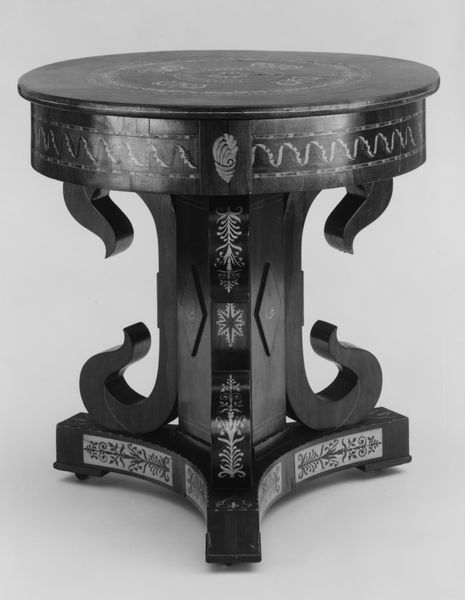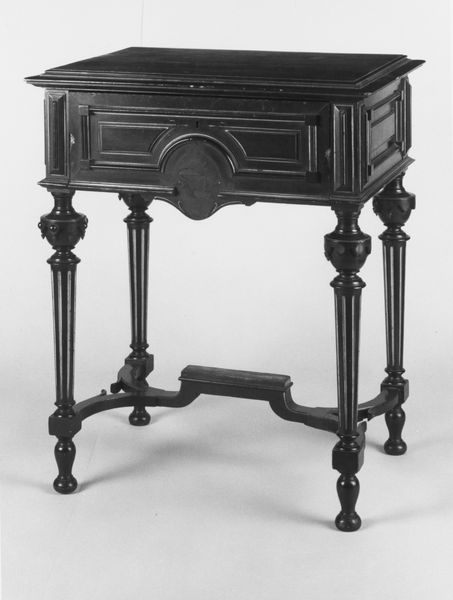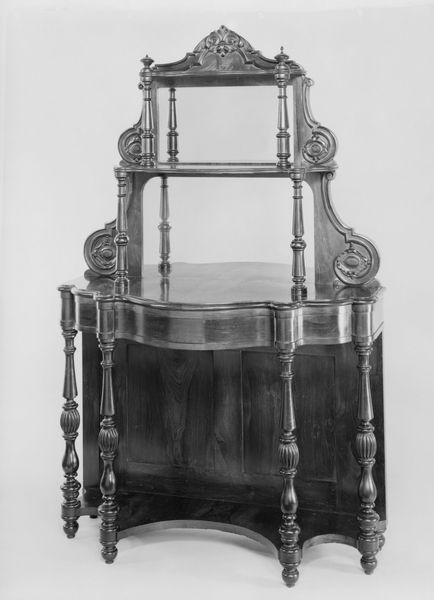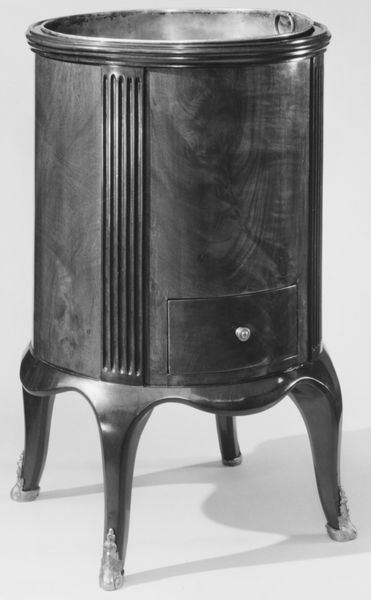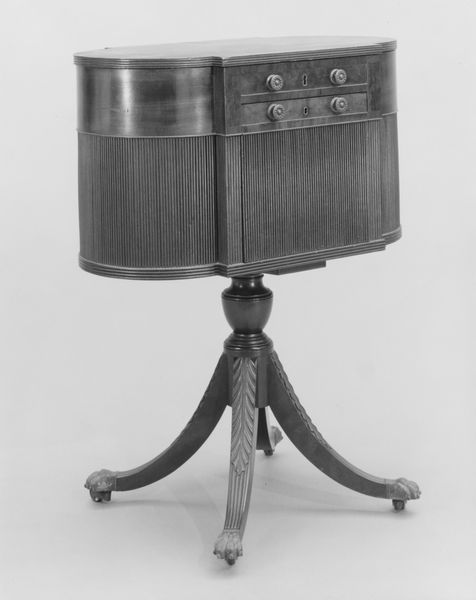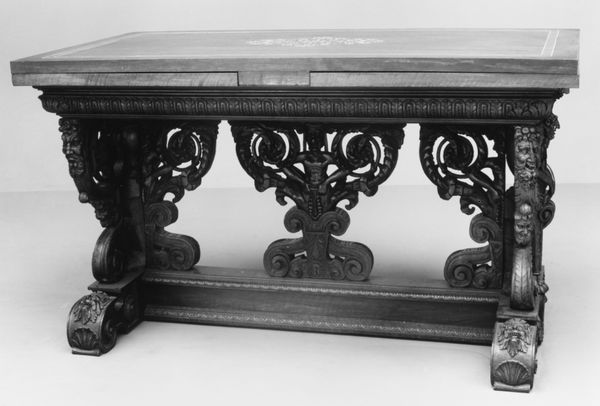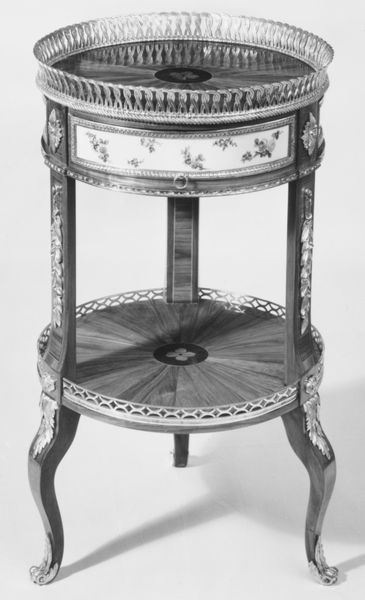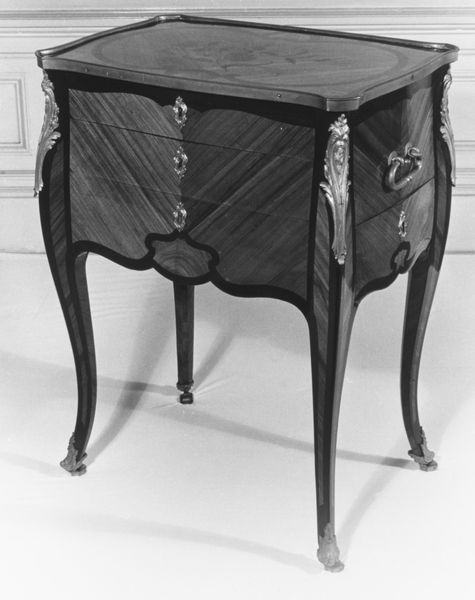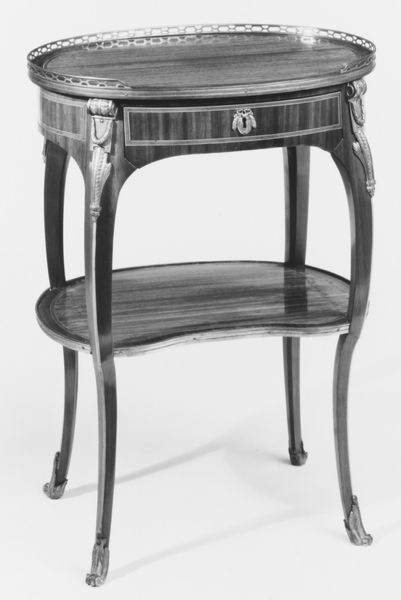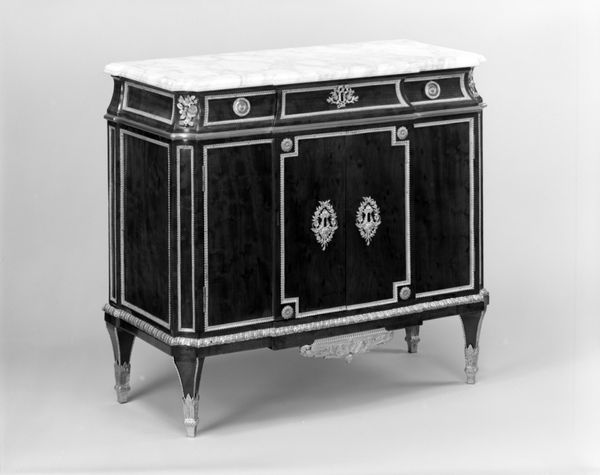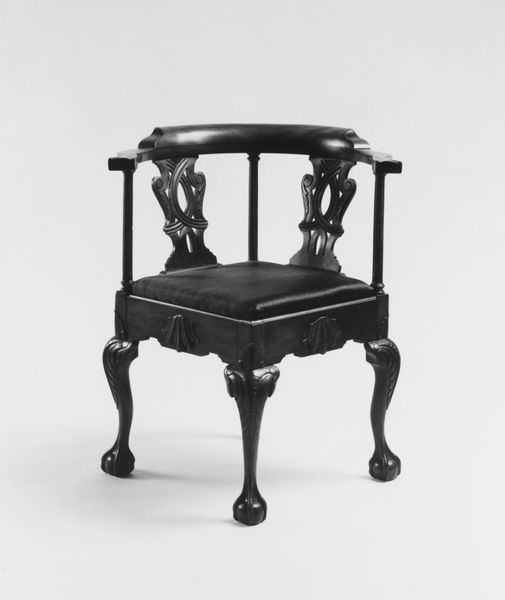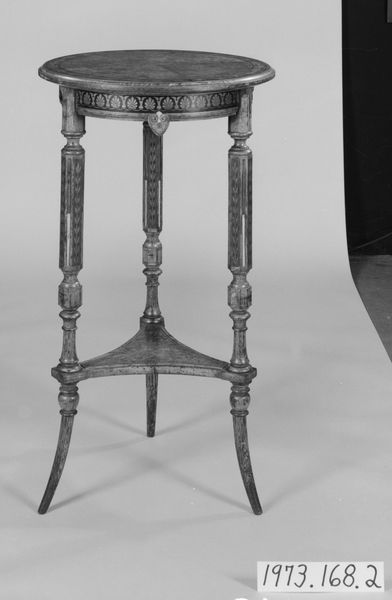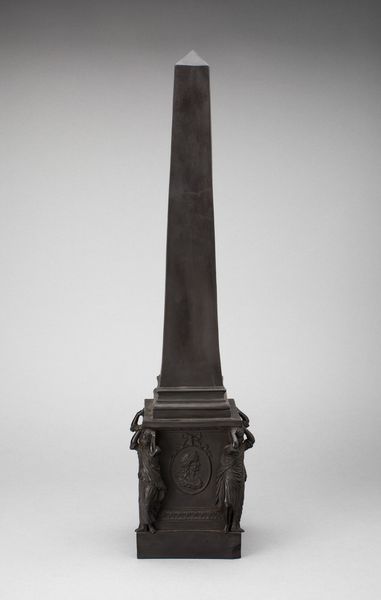
carving, wood
#
portrait
#
neoclacissism
#
carving
#
furniture
#
wood
Dimensions: 29 3/16 x 22 3/4 x 16 in. (74.1 x 57.8 x 40.6 cm)
Copyright: Public Domain
Curator: Let's turn our attention to this striking piece of furniture: a work table crafted between 1810 and 1820 by Duncan Phyfe. This object, currently residing at the Metropolitan Museum of Art, showcases the elegance of the Neoclassical style through its material—primarily wood, meticulously carved. Editor: Oh, wow, my first thought is: elegant but strangely intimidating! Like a powerful dowager in furniture form. It's so dark and the shape is so…assertive. The almost trapezoidal body of the table feels like it's pressing down. Curator: Precisely. The form is a direct reflection of Neoclassical ideals, influenced by ancient Greek and Roman designs, emphasizing symmetry and proportion. However, Phyfe was working within specific social constraints in America; his clients would have wanted to evoke European royalty, but would never admit that! Editor: Right, right! And the feet--those clawed feet! They add to that impression of a watchful, almost predatory nature, don't you think? I mean, this isn’t a welcoming farmhouse table. This says, "Do your needlepoint...correctly." Curator: I see your point about the feet – their prominence speaks volumes. They ground the table but also lift it just enough to suggest elevated status, which links it to systems of patronage at the time. Moreover, furniture in this era, particularly items made by artisans such as Phyfe, became symbolic objects of upward social mobility and reflected America’s burgeoning merchant class. Editor: It’s wild to think about what kind of world this table inhabited! All those hushed drawing rooms and maybe the scratch of a quill pen keeping ledgers…but even as a "work table", it definitely feels like it's saying more about status than, like, honest labor! Curator: Exactly. Duncan Phyfe wasn’t simply building furniture; he was constructing statements. Examining works such as this in the broader context reveals not only artistry, but the nuanced intersection of design, societal aspirations, and wealth. Editor: You've really made me rethink how furniture speaks. What seems merely functional has such a loaded history of ambition and image-making...fascinating! Curator: And what seems so beautiful can have such deep roots. Thanks, that perspective makes my point perfectly.
Comments
No comments
Be the first to comment and join the conversation on the ultimate creative platform.
